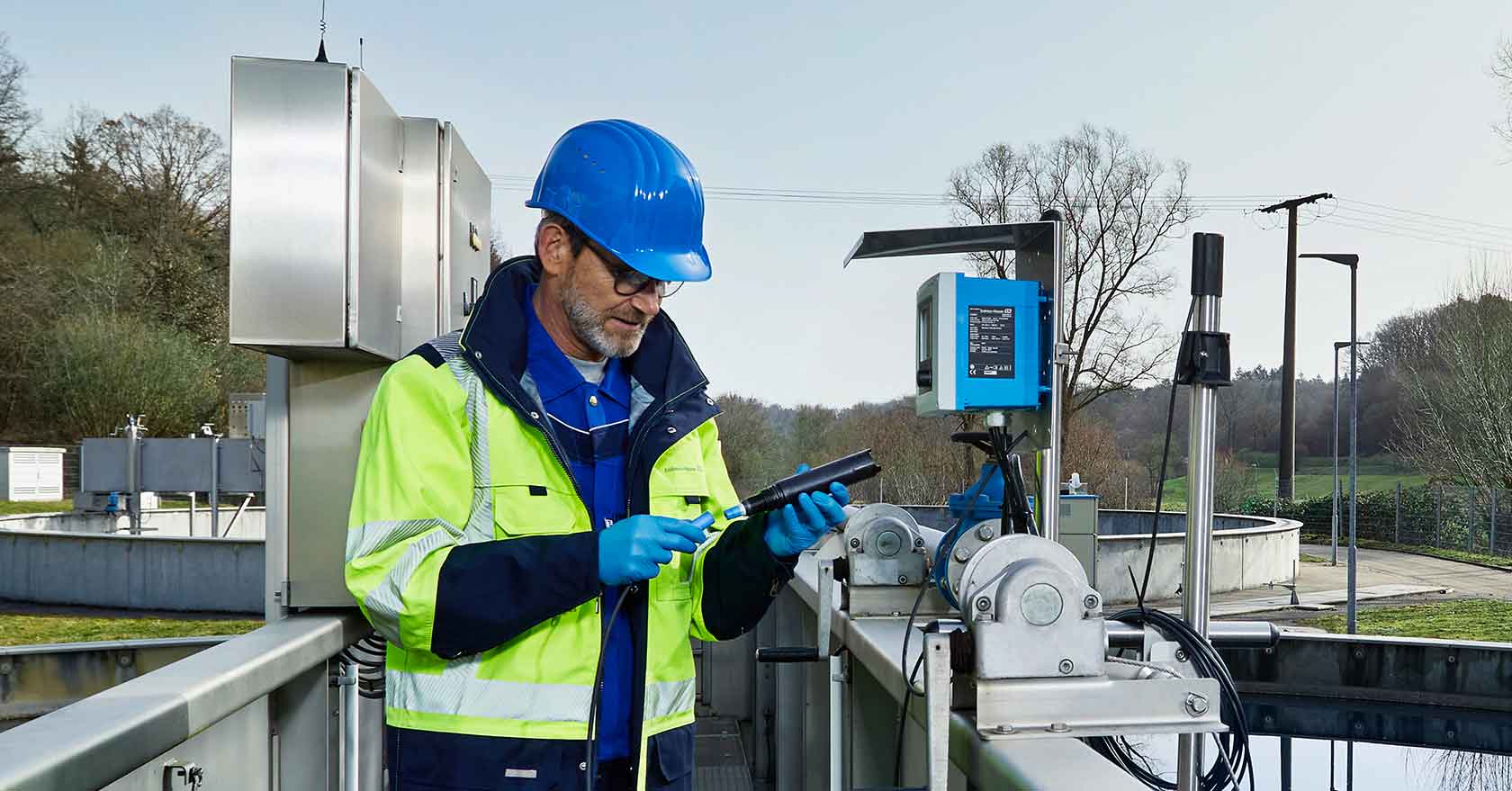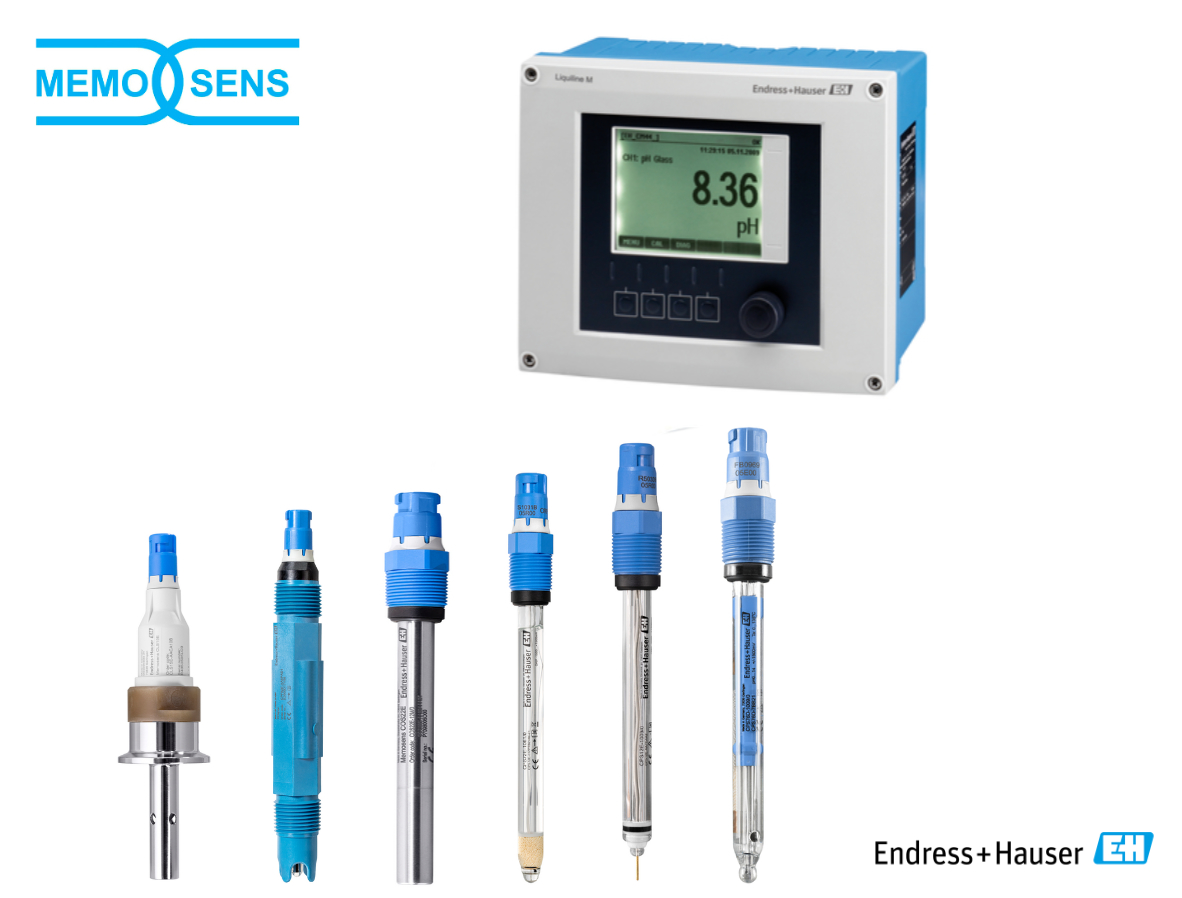Memosens 2.0
Endress+Hauser became a pioneer in the development of digital measuring devices and solutions for liquid analysis with the introduction of the first generation of Memosens sensors in 2004 and successful patent application in 2008. To date, well over one million of these sensors have been produced and have proven their worth in the chemical, life sciences and food industries as well as in the areas of water/wastewater. Memosens 2.0 represents the next, future-proof step in the evolution of Memosens technology while maintaining all of the familiar and well-established advantages. Users can now address Industry 4.0 strategies in real-life liquid analysis applications.
Easy Digital Data Transmission
The advantage of Memosens technology is that digitized measured values and sensor information are transmitted via a non-contact connection from the sensor to the cable and as a digital signal to the transmitter. Selecting the components for a measuring point is easy as Liquiline transmitters automatically recognize the connected sensor type. It is not necessary to select a parameter-specific transmitter. The sensors are also easy to handle when it comes to calibration: Thanks to Memosens technology, field calibration is no longer necessary. Sensors can be easily and safely calibrated in the laboratory or in the factory. This is possible as the relevant data are stored in the sensor head. Precalibrated sensors covering the full range of parameters can thus also be used via 'plug & play'.
Ultimate Reliability in Production and Maintenance
Non-contact signal transmission makes Memosens sensors very reliable as problems do not arise due to moisture and EMC thanks to the inductive, digital signal transfer. Furthermore, disruptions to the connection between sensor and transmitter are displayed actively so errors can be eliminated immediately, thereby increasing process safety. Since the sensors can be exchanged quickly and easily, Memosens significantly reduces the time that maintenance staff spend in dangerous environments.

Memosens 2.0 Connectivity for the Industrial Internet of Things
Now, after 17 years, Endress+Hauser is launching Memosens 2.0 as the next generation of Memosens technology. While the tried-and-tested features of the first version in relation to ease-of-use and safety have been maintained, version 2.0 is now also ready to meet the future requirements of Industry 4.0. New sensors can store the last 8 calibrations/adjustments in the sensor head and data from factory calibration are stored continuously, the digital history is always available. Analysis of these data makes it easier for the user to assess the sensor condition. Memosens 2.0 sensors can also be integrated into Endress+Hauser's Netilion IIoT ecosystem in conjunction with Liquiline transmitters or with the help of Field Xpert tablet PCs.
The new Memosens generation is now completely backwards compatible, so plant owners/operators are in no way forced to replace existing measurement lines with new ones. New sensors can be used without limitation with previous generation transmitters that have already been installed, protecting past investments.

Heartbeat Technology Determines the Sensor Status for pH and Oxygen Sensors
Heartbeat Technology's "sensor status" functionality was adapted in the new pH and oxygen sensors. In addition to other parameters, pH sensor diagnosis considers the measured pH values, the temperatures the sensor was exposed to and the time factor. The result is a reliable assessment of the sensor condition, making it easier for plant owners to plan maintenance work right up to sensor replacement if necessary. Similarly, the new amperometric oxygen sensors now feature an "electrolyte counter", which provides accurate information on the condition of the electrolyte and informs the user about upcoming maintenance requirements in a timely manner.
Tools for Easy Maintenance and Repair
Even without the implementation of Industry 4.0 or IIoT technology, Endress+Hauser offers numerous online tools to help possible maintenance and repair procedures. For example, the Endress+Hauser Operations app for smartphones and tablets can be used for identification of a Memosens 2.0 sensor. The app can then provide the user with immediate information about the sensor on site in the form of documentation and maintenance instructions or information on required spare parts. This information makes on-site maintenance work easier and leads to a successful outcome faster.
Easy to use in Hazardous Areas
The new Memosens generation also makes instrumentation in hazardous areas easier. All the components have an individual approval, and the measuring point can be easily and safely configured, calculated and installed based on the corresponding connection characteristic data. The on-site installation does not need to be changed. Sensors from both the first and new generation can be connected and operated with the CYK10 cable. This protects the investment made by users of first generation Memosens technology.
Conclusion: Future-proof Liquid Analysis with Memosens 2.0
The first generation of Memosens technology is widely used for liquid analysis in many different industries thanks to its simplicity, reliability and safety. Memosens 2.0 is now the next logical step in its evolution towards connectivity and Industry 4.0. The sensors themselves are smart, for example, they can communicate digitally and carry out a self-diagnosis depending on the measuring parameter. It is now also possible to integrate them in cloud solutions such as Endress+Hauser's Netilion IIoT ecosystem so that the sensor data can be used for more in-depth analyses and are ready for the future.


